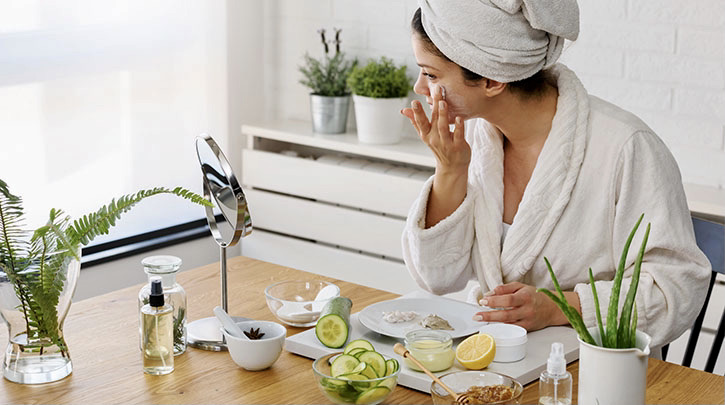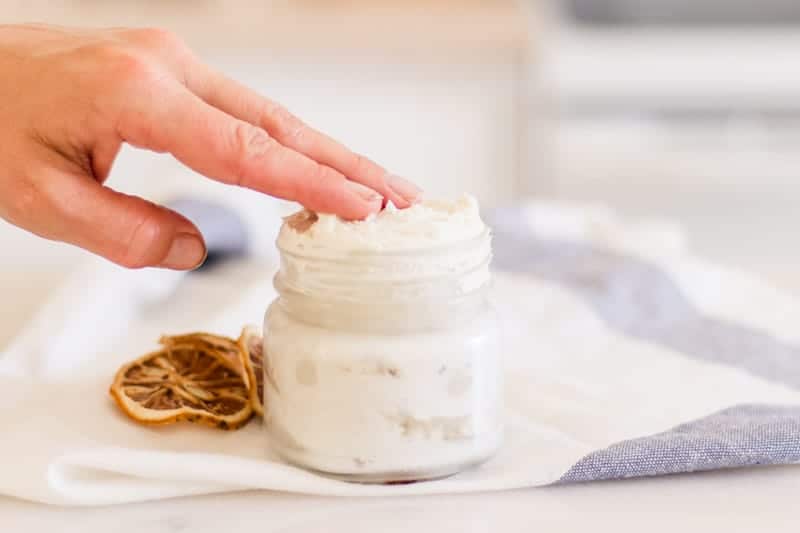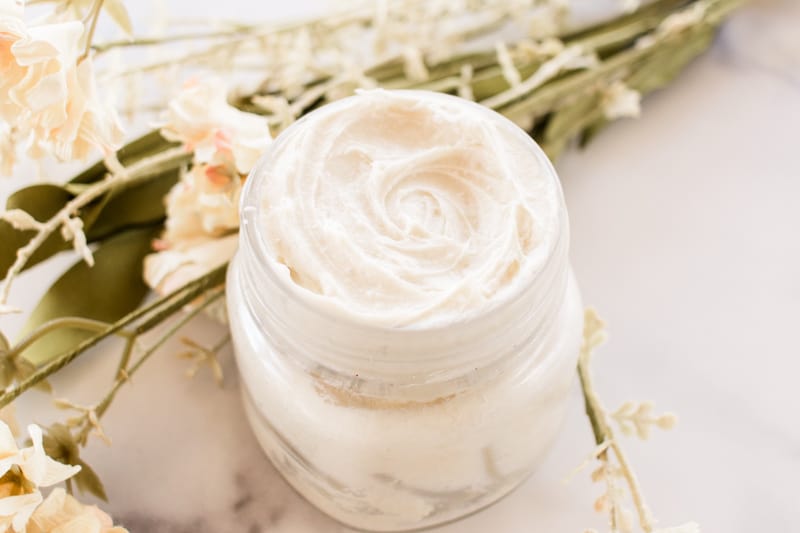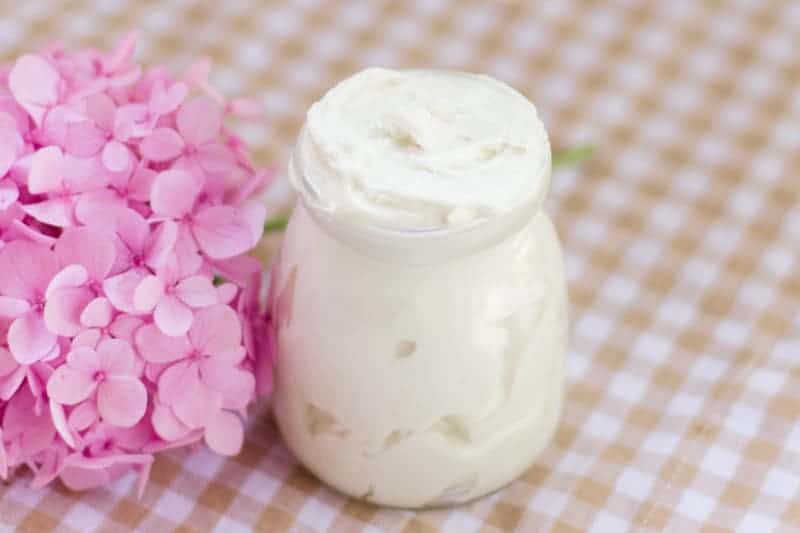In the vast market of modern skincare products, we often overlook simple, natural skincare treasures. Cream, a common ingredient in the kitchen, plays an important role in natural skincare. Not only it is a delicious food ingredient, but it is also a highly nourishing natural skincare component. Have you ever wondered how the fat in cream penetrates deep into the skin, providing hydration and anti-aging effects?
Natural cream is rich in high-quality fats and moisture, which deeply hydrate dry skin, repair the skin barrier, and enhance moisture retention. Its abundant saturated and monounsaturated fatty acids form a protective layer, locking in moisture and preventing the skin from losing water in dry environments. Additionally, cream is rich in vitamins A, D, and E, which help promote skin cell turnover, repair damage, and improve skin texture. Its antioxidant properties also protect against UV damage and reduce signs of aging. For dry skin and aging skin, cream’s moisturizing effects are particularly remarkable, improving skin elasticity, soothing inflammation, and restoring softness and smoothness.
Today, let’s explore the unique charm of cream in beauty and skincare.

Anti-Aging Benefits of Cream
As time passes, our skin gradually loses elasticity and radiance. The vitamins A and E in cream are natural allies in the fight against aging. Vitamin A helps stimulate collagen production, restoring skin elasticity and reducing the appearance of fine lines and wrinkles. Vitamin E, on the other hand, aids in neutralizing free radicals, reducing oxidative damage to the skin.
In addition, the fatty acids in cream help improve the skin’s barrier function, enhancing its resistance to environmental irritants. For skin that shows signs of fine lines, dryness, and sagging, cream can effectively restore firmness and radiance.
Cream in Home Skincare
Cream is not only an ingredient for external skincare, but it can also be transformed into a skincare miracle with simple DIY recipes. Here are a few easy-to-make cream skincare formulas that let you enjoy the moisturizing benefits of natural ingredients while being simple to prepare.
Cream and Honey Moisturizing Mask

Ingredients:
- 2 tablespoons of cream
- 1 tablespoon of honey
- 1 tablespoon of lemon juice (optional)
Method: Mix the cream and honey together. Add the lemon juice and stir until smooth. Apply the mixture to your clean face, avoiding the eye area. Leave it on for 10-15 minutes, then rinse off with warm water.
Benefits: This mask deeply moisturizes and provides antioxidant effects. The fatty acids in the cream help keep the skin hydrated, while honey offers great moisturizing and antibacterial properties, making it perfect for dry skin. The lemon juice gently exfoliates, giving your skin a bright and refreshed feel.
Cream and Milk Hand Care Cream

Ingredients:
- 1 tablespoon of cream
- 1 tablespoon of milk
Method: Mix the cream and milk together. Apply the mixture to your dry hands, focusing on areas like the elbows and fingertips that are prone to cracking. Gently massage it in, and once absorbed, you will feel your hands become nourished and soft.
Benefits: The combination of cream and milk effectively nourishes and repairs dry, cracked hands. The fatty acids in the cream and the lactose and proteins in the milk help lock in moisture, improving dryness and roughness.
Cream Nourishing Lip Mask
Ingredients:
- 1 tablespoon of cream
- 1/2 tablespoon of honey
Method: Mix the cream and honey together. Gently apply the mixture to your lips and leave it on for 10-15 minutes. Afterward, gently wipe it off.
Benefits: The combination of cream and honey deeply moisturizes dry, cracked lips and helps relieve dryness and peeling. It is especially useful during the dry winter months.
The Magic of Cream + Whipped Cream Dispenser
If you want to make your homemade cream mask more creative and easier to use, cream buffet’s whipped cream dispenser could be the perfect choice. You can place cream and other ingredients, like honey or essential oils, into the dispenser. By applying pressure, the cream turns into a delicate foam, making masks and moisturizers easier to apply and absorb.
This foamy cream not only evenly covers your face, giving your skin a silky feeling, but also provides long-lasting moisture. Whether used as a mask or moisturizer, it enhances the skincare effect.

Although cream is a natural ingredient with nourishing benefits, many people may have concerns when it comes to skincare. After all, cream is high in fat. How can it be combined with skincare without causing issues? Will cream make the skin greasy? Is it suitable for all skin types? Can long-term use cause allergies or dependency? These are common worries when using cream for skincare. To address these concerns, we’ll explore some common doubts about cream skincare and provide effective solutions.
Common Concerns and Questions About Using Cream for Skincare
Will cream make my skin greasy?
This is a common concern, especially for those with oily or combination skin. Cream is high in fat, containing rich saturated fats and milk fats, so it might seem like it could make the skin oilier. Oily skin people may worry that it will clog pores and cause acne. However, the fatty acids in cream are natural and gentler compared to many synthetic oils in skincare products. Cream not only moisturizes dry skin but also helps restore the oil-water balance in oily skin. If you have oily or acne-prone skin, you can use cream for localized care instead of applying it all over your face. For those with oil-prone skin, doing a patch test before use is recommended.
Can cream cause allergic reactions or irritation?
Cream contains lactose and proteins, which could cause allergic reactions for some, especially for those sensitive to dairy. It’s best to do a small patch test before using it extensively. Apply a small amount of cream on the inner forearm and wait 24 hours to check for any irritation, redness, or discomfort. If there’s no reaction, it’s safe to use. If you have allergies, consider using plant-based creams or mixing with other gentle natural ingredients like honey, oats, or aloe vera.
Will long-term use of cream make my skin “dependent”?
Some worry that long-term use of cream might make the skin “dependent” on it, and stopping could lead to dryness or discomfort. However, cream offers natural nourishment and creates a protective barrier to prevent moisture loss without relying on complex chemicals. When you stop using it, your skin will return to its natural oil-water balance. If you’re concerned about over-moisturizing, you can use cream periodically instead of daily, allowing your skin to adjust.

Can cream effectively fight aging?
Many wonder if cream can really fight aging, especially with so many anti-aging products available. Cream contains vitamins A, E, and D, and various fatty acids, which have anti-aging properties. Vitamin A helps stimulate collagen production, promoting firm, smooth skin. Vitamin E is an antioxidant that helps fight free radicals and slow down the aging process. Vitamin D aids in skin repair. While cream may not be as potent as specialized anti-aging serums, its natural, gentle, and versatile properties make it an excellent anti-aging ingredient, especially for sensitive skin.
How to combine cream with other skincare products?
Cream can be used flexibly, but it’s best to apply it as the final step in your skincare routine. After cleansing and toning, you can apply serums or essential oils first, then follow with cream to lock in moisture and enhance hydration. If you have specific skin concerns like dark spots or fine lines, use targeted treatments like anti-aging or brightening serums before applying cream as a moisture-sealing step. Avoid using alcohol-based toners before applying cream, as they might reduce its hydrating effect.
Is cream suitable for all skin types?
Cream is suitable for most skin types, especially dry and normal skin, where its moisturizing effects are most noticeable. However, those with oily or acne-prone skin should be more cautious. The fat content in cream might feel heavy on oily skin, so it’s best to use it sparingly. For acne-prone skin, avoid applying cream on areas with breakouts to prevent clogging pores. Sensitive skin users should opt for hypoallergenic, additive-free creams or test it on a small area before applying.
How should cream be stored?
When using cream for skincare, it’s best to use fresh, natural cream and apply it quickly. If you make DIY cream masks or other products, store them in the fridge to prevent spoilage. Homemade cream masks should generally be used within 2-3 days. Keep them away from prolonged exposure to room temperature to maintain freshness and prevent bacterial growth.
Conclusion: Natural Moisture for Healthy Skin
Cream, with its natural nutrients, provides strong nourishment in skincare. It offers deep hydration, anti-aging benefits, and helps repair the skin barrier, making it a gentle and effective option for all skin types. By using simple DIY recipes or innovative tools, you can easily incorporate cream into your daily skincare routine. This allows you to enjoy natural moisture and care. Make cream a part of your skincare routine to achieve healthy, smooth, and youthful-looking skin.